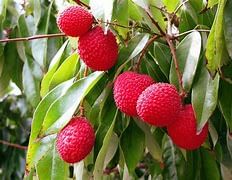UPSC Daily Current Affairs- 30th December 2023 | Current Affairs & Hindu Analysis: Daily, Weekly & Monthly PDF Download
GS-I
Warli Paintings
Subject: Art and Culture

Why in News?
Recently, an exhibition by the Inherited Arts Forum, traces the artistic journey of the celebrated Mashe family and their effort in reviving the Warli painting.
- It is a style of tribal art created by the tribal people from the North Sahyadri Range in Maharashtra.
- This art form can be traced back to 10th century AD but was first discovered and appreciated for its distinctive style only in the early 1970s.
- It was traditionally practised by women of the Warli tribe called Suvasinis, who decorated the Lagn Chowk or the wedding square.
- Theme:
- Warli represents the daily routine of rural life, the relationship of the tribal people with nature, their gods, myths, traditions, customs, and festivities.
- These rudimentary wall paintings use a set of basic geometric shapes: a circle, a triangle, and a square.
- The central motif in each ritual painting is the square, known as the "chauk" or "chaukat", mostly of two types known as Devchauk and Lagnachauk.
- One of the central aspects depicted in many Warli paintings is the tarpa dance. The tarpa, a trumpet-like instrument, is played in turns by different village men. Men and women entwine their hands and move in a circle around the tarpa player.
- Painting technique and materials
- First design is selected.
- Without tracing design, it is directly drawn on paper or cloth.
- Cleverly modified bamboo sticks are used as paint brushes to create the paintings.
- The colours and materials used for the paintings are derived from nature like brown and orange from henna, indigo from dye, red from bricks and white from thick rice paste.
Source: The Hindu
GS-II
Maulana Azad National Fellowship
Subject: Governance

Why in News?
Research students have raised concerns about the disparity in scholarship amounts under the Maulana Azad National Fellowship (MANF) compared to other research fellowships.
About Maulana Azad National Fellowship
| Details | |
| Objective | To support students from minority communities in pursuing M.Phil. and Ph.D. |
| Launch | Launched by the Ministry of Minority Affairs, Government of India |
| Eligibility | Students from minority communities (Muslims, Sikhs, Christians, Buddhists, Zoroastrians, Jains) who have cleared CBSE/NTA-UGC NET or CSIR NET |
| Financial Assistance | Covers university fee, maintenance allowance, and other necessary allowances; granted for up to 5 years |
| Administration | Managed by the Ministry of Minority Affairs; University Grants Commission (UGC) as the nodal agency |
| Selection Process | JRF-NET (Junior Research Fellow- National Eligibility Test) examination |
| Purpose and Impact | Encourages higher studies and research in various fields; aims at educational and socio-economic development of minority communities |
Recent Developments and Concerns
- Discontinuation of MANF: Union Minority Affairs Minister announced the discontinuation of MANF, citing overlaps with similar scholarships.
- Research Community’s Reaction: The research community, represented by the All India Research Scholars Association (AIRSA), has expressed disappointment, emphasizing the role of research in socio-economic development and the importance of MANF for financially constrained minority students.
Comparison with Other Fellowships
- Last Revision in 2019: The last increase in MANF scholarship amounts was in 2019, while other scholarships have seen recent revisions.
- Current Fellowship Amounts: UGC-approved schemes now offer ₹37,000 for junior researchers and ₹42,000 for senior researchers, a significant increase from previous amounts.
Source: Indian Express
GS-III
Chameleon Trojan: Compromising Biometric Security on Android Devices
Subject: Science and Technology

Why in News?
Security researchers have identified an updated version of the ‘Chameleon Trojan’ malware, capable of disabling biometric authentication methods.
Chameleon Trojan
- The malware’s primary objective is to steal the phone’s PIN by bypassing fingerprint and face unlock security features.
- This trojan attaches itself to legitimate Android applications, such as Google Chrome, to evade detection.
- It operates in the background and is reportedly undetectable during runtime, bypassing Google Protect alerts and other security software.
- It exploits the Accessibility service on Android 12 and earlier versions, while on newer versions, it circumvents Google’s security restrictions through different methods.
Modus Operandi of Chameleon Trojan
- To bypass new restrictions, the malware displays an HTML page instructing users to enable the Accessibility service for the app, compromising device security.
- Once active, it captures on-screen content, navigates using gestures, and steals PINs and passwords, subsequently accessing more sensitive data like credit card details and login credentials.
- The malware also tracks app usage habits to time its attacks when the device is least likely to be in use.
Protection against Chameleon Trojan
- Users are advised to avoid installing Android apps from unofficial sources to reduce the risk of malware infection.
- Be wary of enabling the Accessibility service for apps that are not well-known or trusted.
- Conducting regular security scans on the device can help in identifying and mitigating threats.
- Ensuring that Google Play Protect is enabled at all times is recommended for continuous monitoring and protection against malware.
Source: The Hindu
Story of ULFA and the Historic Tripartite Agreement
Subject: Defence and Security

Why in News?
The Union Ministry of Home Affairs (MHA), the Assam government and the pro-talks faction of the United Liberation Front of Asom (ULFA) signed a memorandum of settlement.
- This “tripartite settlement is significant for Assam’s peace” and the government is said to have achieved success in eliminating all the violent groups in the State.
ULFA and Assam’s Struggle
- Formation of ULFA: The United Liberation Front of Asom (ULFA) was established in 1979 by radical thinkers amidst growing concerns over the identity and resources of the indigenous Assamese population.
- Cultural and Economic Shifts: The influx of migrants due to the booming tea, coal, and oil economy, compounded by the Partition and refugee influx, heightened insecurities among the native Assamese.
- Assam Accord of 1985: Aimed at resolving the issue of foreigners in Assam, the Accord was a response to a prolonged mass movement but failed to address all concerns, leading to the formation of ULFA.
Four Decades of Violence and State Response
- ULFA’s Armed Struggle: The group sought a sovereign Assamese nation through armed conflict, resulting in kidnappings, extortion, and loss of life.
- Operation Bajrang and AFSPA: In response, the Indian government launched Operation Bajrang in 1990, imposing President’s rule and the Armed Forces Special Powers Act (AFSPA) in Assam.
- Internal Divisions and State Allegations: ULFA faced internal divisions, with one faction (SULFA) surrendering and allegedly conducting state-backed ‘secret killings’ of other ULFA members.
ULFA’s External Support and Links
- Camps in Neighboring Countries: ULFA maintained camps in Myanmar, Bangladesh, and Bhutan, using them for training, shelter, and launching cross-border operations.
- Connections with Global Terror Groups: The outfit established links with Islamic terror groups and Pakistan’s ISI, with its military chief reportedly meeting Osama Bin Laden.
Efforts Towards Peace
- Initial Peace Talks: In 2005, ULFA formed a ‘People’s Consultative Group’ for peace talks, but discussions broke down, leading to renewed violence.
- Renewed Peace Initiatives: Post-2008, some ULFA commanders, including Arabinda Rajkhowa, sought peace talks, leading to a major split in the organization.
- Pro-Talks Faction’s Demands: The pro-talks faction submitted a 12-point charter of demands in 2012, leading to recent discussions and the historic tripartite peace agreement.
Tripartite Peace Agreement
- Significance of the Deal: The agreement between the pro-talks ULFA faction, the Government of India, and the Assam state government marks a significant step towards peace.
- Expert Opinions: Journalists and experts like Rajeev Bhattacharya view the deal as a positive development but acknowledge uncertainties regarding its completeness and effectiveness.
- Government’s Optimism: Union Home Minister expressed confidence in the agreement as a new era of peace, while Assam CM showed interest in engaging with the anti-talks faction.
Conclusion
- Hope for Lasting Peace: The peace deal with the pro-talks ULFA faction opens a new chapter in Assam’s history, potentially paving the way for lasting peace and development.
- Challenges Ahead: The success of the agreement and the engagement with the remaining factions of ULFA, particularly those demanding sovereignty, will determine the future stability and prosperity of Assam.
Source: Indian Express
Analyzing the Slowdown in India’s Core Sector
Subject: Economy

Why in News?
India’s eight core sectors experienced a significant slowdown, growing by 7.8% in November, down from 12% in October.
About Core Industries in India
- The main or key industries constitute the core sectors of an economy.
- In India, eight sectors are considered the core sectors.
- These sectors are in decreasing order of their weightage: Refinery Products> Electricity> Steel> Coal> Crude Oil> Natural Gas> Cement> Fertilizers.
About Index of Eight Core Industries
- The monthly Index of Eight Core Industries (ICI) is a production volume index.
- ICI measures the collective and individual performance of production in selected eight core industries viz. Coal, Crude Oil, Natural Gas, Refinery Products, Fertilizers, Steel, Cement and Electricity.
- Before the 2004-05 series six core industries namely Coal, Cement, Finished Steel, Electricity, Crude petroleum and Refinery products constituted the index basket.
- Two more industries i.e. Fertilizer and Natural Gas were added to the index basket in the 2004-05 series. The ICI series with base 2011-12 will continue to have eight core industries.
The components covered in these eight industries for compilation of the index are as follows:
- Coal – Coal Production excluding Coking coal.
- Crude Oil – Total Crude Oil Production.
- Natural Gas – Total Natural Gas Production.
- Refinery Products – Total Refinery Production (in terms of Crude Throughput).
- Fertilizer – Urea, Ammonium Sulphate (A/S), Calcium Ammonium Nitrate (CAN), Ammonium chloride (A/C), Diammonium Phosphate (DAP), Complex Grade Fertilizer and Single superphosphate (SSP).
- Steel – Production of Alloy and Non-Alloy Steel only.
- Cement – Production of Large Plants and Mini Plants.
- Electricity – Actual Electricity Generation of Thermal, Nuclear, Hydro, imports from Bhutan.
Recent data: Sector-Wise Growth Details
- Decline in ICI: The ICI witnessed a 3.34% drop from October, marking its lowest since March 2023.
- Sector-Specific Trends: Notably, only refinery products and coal showed month-on-month growth, with significant year-on-year increases.
- Steel Production: Growth in steel production hit a 13-month low at 9.1%.
- Crude Oil and Fertilizer: Crude oil saw a contraction, while fertilizer production growth decelerated.
- Natural Gas and Electricity: Both natural gas output and electricity generation growth slowed down considerably in November.
Comparative Analysis with Previous Year
- Year-on-Year Comparison: The core sectors had a 5.7% growth in November 2022.
- Influence of Base Effects: Last year’s high growth in certain sectors like cement significantly influenced this year’s comparative figures.
Economic Insights and Projections
- Bank of Baroda’s Perspective: The slowdown in fertilizer growth aligns with the end of the rabi sowing season, as per the bank’s chief economist.
- IIP Forecast: The core sectors are expected to contribute to an IIP growth of 7%-8%.
- Economists’ View: Experts predict a continued slowdown in core sector growth due to strong base effects from the previous fiscal year.
Future Expectations and Challenges
- India Ratings and Research Predictions: A slowdown in core sector growth is anticipated in the coming months, influenced by the strong base effect.
- Broader Economic Impact: This slowdown is indicative of larger economic challenges, potentially affecting future policy and market expectations.
Conclusion
- Economic Resilience Test: The trends in India’s core sectors underscore the challenges in sustaining growth amid diverse economic conditions.
- Need for Strategic Economic Planning: Addressing these slowdowns will require astute economic planning and possibly new strategies to boost growth in these key sectors.
Source: Financial Express
Litchi cultivation
Subject: Environment and Ecology

Why in News?
Recently, an official from National Research Centre on Litchi (NRCL) informed that Litchi is now being cultivated across 19 Indian states across India.
- Litchi is a delicious juicy fruit of excellent quality. Botanically it belongs to Sapindaceae family.
- The translucent, flavoured aril or edible flesh of the litchi is popular as a table fruit in India.
- Agro-climatic requirements
- Litchi is a sub-tropical fruit and thrives best under moist sub-tropical climate.
- It usually prefers low elevation and can be grown up to an altitude of 800 m.
- Soil: Deep, well drained loamy soil, rich in organic matter and having pH in the range of 5.0 to 7.0 is ideal for the crop.
- Temperature: The temperature should not go beyond 40.5 0C in summer and below freezing point in winter.
- Rain: Prolonged rain may be harmful especially at the time of flowering, when it interferes with pollination.
- The young trees require protection against frost and hot winds for several years till they are firmly established, even though some variation in temperature is necessary for proper fruiting of trees.
- Frost during winter and dry heat in summer are limiting factors for its successful cultivation.
- In India, commercial cultivation was traditionally restricted to the north in the foothills of Himalayas from Tripura to Jammu & Kashmir and plains of Uttar Pradesh and Madhya Pradesh.
- However, with growing demand and viability of the crop, commercial cultivation has spread to several other states viz. Bihar, Jharkhand, Madhya Pradesh, Chhattisgarh etc.
- India is the second largest producer of litchi in the World after China. Other major producing countries are Thailand, Australia, South Africa, Madagascar and Florida in US.
Source: Down to Earth
Grey Francolin
Subject: Environment and Ecology

Why in News?
In an encouraging development, Grey Francolin (Ortygornis pondicerianus) was reported inside the Sanjay Gandhi National Park (SGNP) of Mumbai.
- It is a ground-dwelling bird known for its distinctive calls and cryptic plumage.
- They are carnivores (insectivores) and herbivores (granivores).
- Habitat: Grey francolins inhabit open plains, bare or low grass-covered ground in scrub and open country. They are also found in open cultivated lands and scrub forest and are rarely found above an altitude of 500 m above sea level in India.
- Distribution: Grey francolins are found in the Indian subcontinent and Iran. Their distribution is south of the foothills of the Himalayas westwards to the Indus Valley and eastwards to Bengal. They are also found in north-western Sri Lanka.
- Conservation Status
- IUCN Red List :Least Concern
- It is located in the state of Maharashtra which was formerly known as Borivali National Park.
- The 2400-year-old Kanheri caves are sculpted out of the rocky cliff which lies within the park.
- Flora: Kadamba, Teak, Karanj, Shisham, and species of acacia, Ziziphus, euphorbias etc are found in this National Park.
- Fauna: Chital, Rhesus macaque, Bonnet macaque, Black-naped, Bengal Tiger etc.
Source: Deccan Herald
|
44 videos|5271 docs|1113 tests
|





















